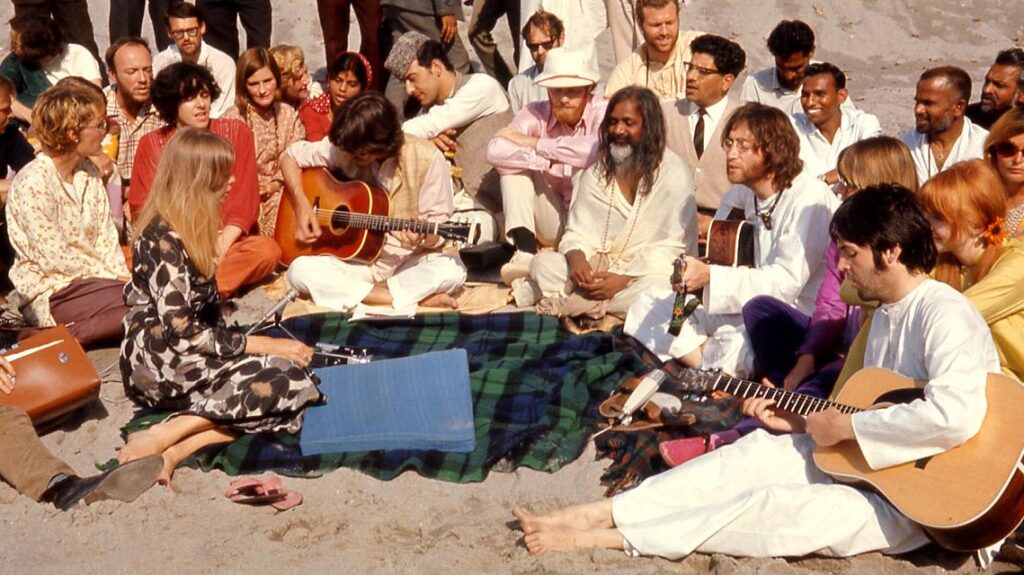The Beatles’ White Album: Brilliance Overcame Adversity
Even with the bitter taste of the Maharishi and Yoko Ono’s unwanted presence, the Beatles created a masterpiece.
Most rock fans have a cheerful attachment to the Beatles’ White Album…the band’s only self-titled disc that came in a white package. It was their first album released on the fledgling Apple label.
The recording sessions for the album began with the song “Revolution” on May 30, 1968, and concluded with a Take 3 of the song “Julia” on October 18, 1968. Towards the end, the band held its first and only 24-hour session for final mixing and the sequencing of songs. John Lennon, Paul McCartney and George Martin participated.
30 Songs Worth of Listening Pleasure
The White Album is a joyful potpourri of cleverness, masterful individual songwriting (“Dear Prudence,” “Blackbird,” “Mother Nature’s Son”) humor (“Rocky Raccoon,” “Happiness is a Warm Gun”), social satire (“Piggies,” Revolution”) rock ‘n’ roll (“Helter Skelter” “Back in the USSR”), throwaway fun (“The Continuing Story of Bungalow Bill,” “Why Don’t We Do It In the Road?”) and just one difficult to listen to (“Revolution #9”).
Beatles fans were treated to 30 songs worth of pure listening pleasure. Rolling Stone ranked the White Album #10 among all rock albums ever. This is all the more amazing when you learn that recording the White Album was anything but pleasurable. In fact, Paul McCartney called it “the tension album.”

Indian Bummer
In February 1968, the four Beatles traveled with their wives or girlfriends to Rishikesh, India, to learn Transcendental Meditation from the Maharishi Mahesh Yogi. The Beatles’ growing disillusionment with the Maharishi is cleverly captured by the biting lyrics of the song, “Sexy Sadie.” The fact is, they couldn’t wait to get back to Abbey Road Studios by May of that year to record what would become the White Album.
John, Paul and George had written a ton of songs during those hot, lazy Indian days and nights. These songs were written while the boys were free from the influence of drugs and alcohol. Could this be one reason why the songs on the White Album shined so brightly?
Unkempt and Prickly
On the other hand, something had drastically changed in the individual Beatles’ demeanors. Geoff Emerick, the recording engineer at Abbey Road, described the change in his book about recording the Beatles, Here, There and Everywhere:
They had come back from their trip to India completely different people. They had once been fastidious and fashionable; now they were unkempt. The had once been witty and full of humor; now they were solemn and prickly. They had once bonded together as life-long friends; now they resented each other’s company.
On July 16, that same Geoff Emerick, who had been with the Beatles since the Revolver days, announced he was no longer willing to work with the Beatles. On August 22, Ringo, tired of waiting for his mates to show up for sessions, resigned from the group. Ringo returned shortly after to a drumkit surrounded by flowers, but according to Beatles historian Mark Lewisohn, Paul McCartney played drums on “Back in the U.S.S.R.”
To make matters worse, there seemed to be a “fifth Beatle” roaming about.
Yoko Ono
At various points during the making of the White Album, Yoko Ono not only accompanied John in the studio but followed him wherever he went. Emerick: “If [John] went to the toilet, she’d walk him down the hall and wait outside, hunched down on the floor.” The Beatles’ producer, George Martin, remarked to Emerick, “What on earth is John thinking?”
But it was the effect on the other Beatles that mattered most. Emerick:
You could tell from the icy chill and the looks on the faces of Paul, George and Ringo that they didn’t like it one bit. Their ranks had always been closed, and it was unthinkable that an outsider could penetrate their inner circle so quickly and so thoroughly.
Serendipity With Eric Clapton

There was one “outsider,” however, who could at least temporarily salve the festering wounds of India.
On Friday, September 6, 1968, Cream guitarist Eric Clapton stepped into Studio Two at Abbey Road to play lead guitar on George Harrison’s new song, “While My Guitar Gently Weeps.” According to George Harrison, everybody was on their best behavior during Clapton’s time in the studio.
It almost didn’t happen. In a car together from their homes in Surrey to the London studio, George asked his good friend to play lead guitar. According to Mark Lewisohn, Clapton exclaimed, “No one plays on Beatles sessions!” George answered, “So what? It’s my song.”
Was Clapton Invited to Join the Beatles?
John Lennon never made it to the iconic session. It’s not that Lennon didn’t like Clapton. In fact, when George Harrison temporarily quit the Beatles on January 10, 1969, John made a casual suggestion that Eric take George’s place in the band. We don’t know how seriously to take John’s words; he might have been motivating George to rejoin the band.
In any case, John’s pronouncement set off a whirlwind of speculation about Eric Clapton being a genuine fifth Beatle. Clapton responded to this absurdity in 1998:
The problem with that is that I had bonded with George, exclusive of them…So I don’t think I could have been brought into the whole thing because I was too much of a mate of George’s.
Eric Clapton
Coda
The White Album was released on November 22, 1968. Despite the turbulent five months of recording and mixing, the record generated sterling reviews: Critics were “ecstatic at the huge selection and diversity of taste on the LP.”
Ever the cynic, John Lennon gets the last word:
It’s like if you took each track, it was just me and a backing band, Paul and a backing band…I enjoyed it but then we broke up.
John Lennon

















































































































